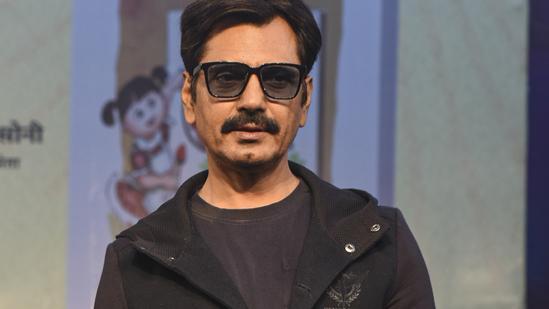
It’s Creative Bankruptcy: Nawazuddin on Bollywood’s Stagnancy
Bollywood, the self-proclaimed “land of a thousand dances” and “mecca of Indian cinema,” has been facing a creative slump for a while now. The industry, once known for producing iconic films that left audiences in awe, has been relying heavily on formulas that have worked in the past. This stagnancy has been criticized by many, including the talented Nawazuddin Siddiqui, who recently called out Bollywood for being “creative bankrupt.”
In a recent interview, Nawazuddin expressed his disappointment with the state of the industry, stating that Bollywood has been “copying” from other entertainment industries, including Hollywood and the South Indian film industry. “They think if a formula is working, keep milking it. Even more pathetic is that now there are 2, 3, 4 [sequels] being made. It’s creative bankruptcy,” he said.
Nawazuddin’s comments are not without merit. The Indian film industry has been plagued by the sequelitis syndrome, where filmmakers are making multiple sequels of successful films, without adding any new or innovative elements to the story. This has led to a homogenization of the industry, with many films feeling like carbon copies of each other.
The actor also called out Bollywood for “normalizing” copying. He stated that most cult classic movies have copied scenes from other films, without giving credit to the original creators. “Humne South ko churaya (We have stolen from the South),” he said, referring to the South Indian film industry, which has been a major influence on Bollywood.
Nawazuddin’s comments are a wake-up call for the Indian film industry. The industry has been relying heavily on formulas that have worked in the past, rather than taking risks and trying new things. The result is a creative stagnation, where filmmakers are making the same films over and over again, without adding any new or innovative elements to the story.
The Indian film industry has been criticized for its lack of originality, with many films feeling like they are copying from other industries. The industry has been accused of copying Hollywood films, as well as films from the South Indian film industry. This lack of originality has led to a creative stagnation, where filmmakers are making the same films over and over again, without adding any new or innovative elements to the story.
Nawazuddin’s comments are not the first time that the Indian film industry has been criticized for its lack of originality. In the past, many filmmakers have criticized the industry for its reliance on formulas and its lack of willingness to take risks. The industry has been accused of being too focused on making money, rather than creating art.
However, Nawazuddin’s comments are a rare instance of a Bollywood star speaking out against the industry’s creative bankruptcy. Most Bollywood stars are reluctant to speak out against the industry, fearing that it may harm their careers. However, Nawazuddin’s comments are a testament to his commitment to his craft and his willingness to speak the truth, even if it means ruffling a few feathers.
Nawazuddin’s comments are also a reminder that the Indian film industry is not immune to the creative bankruptcy that plagues many industries. The industry has been in a state of creative stagnation for a while now, and it is imperative that filmmakers take risks and try new things to revive the industry.
In conclusion, Nawazuddin’s comments are a wake-up call for the Indian film industry. The industry has been plagued by creative bankruptcy, with filmmakers relying heavily on formulas that have worked in the past, rather than taking risks and trying new things. The result is a homogenization of the industry, with many films feeling like carbon copies of each other. It is imperative that the industry takes Nawazuddin’s comments seriously and makes a conscious effort to revive its creative spark.






